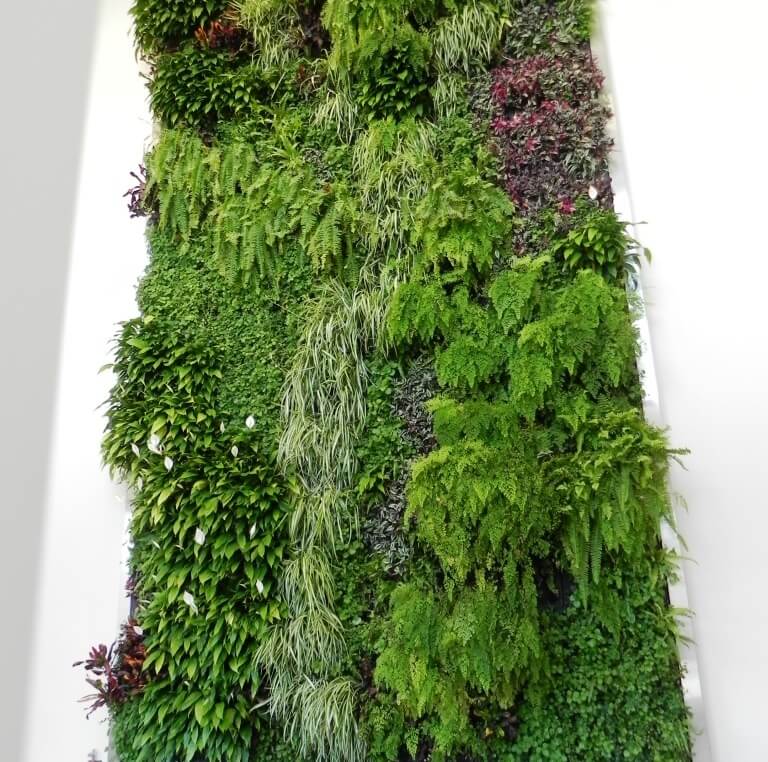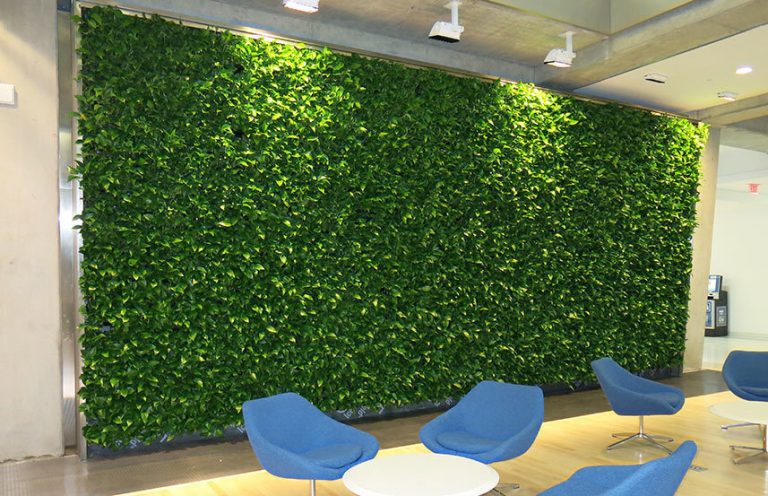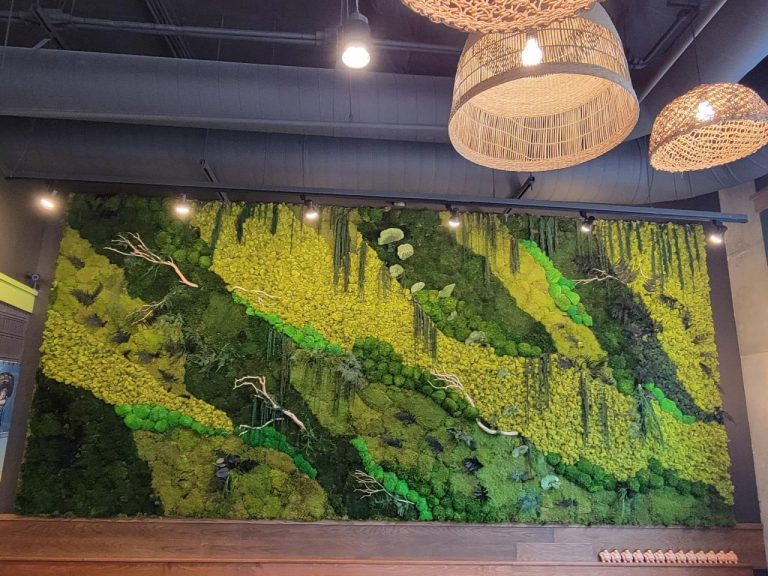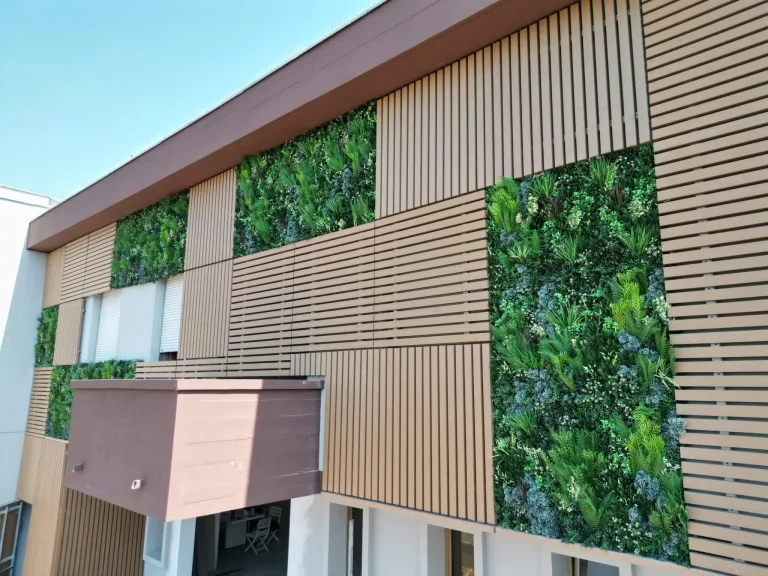Small Living Walls A Comprehensive Guide
Small living wall offers a captivating approach to bringing nature indoors. These miniature vertical gardens, wall planters, and modular systems are quickly becoming popular design elements for homes, offices, and even restaurants. They offer a variety of aesthetic and environmental benefits, from enhancing a space’s visual appeal to improving air quality.
This guide delves into the specifics of small living walls, covering everything from design and installation considerations to plant selection, maintenance, and the associated costs. We’ll explore the diverse types of small living walls available, their varying features, sizes, and costs, offering a practical comparison table. We will also investigate the crucial aspects of plant selection, considering light and water requirements. The importance of proper installation and ongoing maintenance will also be addressed. Ultimately, we aim to provide a complete understanding of small living walls, allowing you to make informed decisions about incorporating this green design element into your space.
Introduction to Small Living Walls
Small living walls, often referred to as vertical gardens or wall planters, are a popular and growing trend in interior and exterior design. These compact, self-sustaining systems bring the benefits of greenery indoors or onto walls, offering aesthetic appeal and potential air purification, while occupying a relatively small footprint compared to larger green walls. They represent a practical approach to incorporating nature into spaces with limited room.
Key distinctions from larger-scale living walls include smaller surface areas, usually less than 10 square meters, and simpler design requirements. This smaller scale frequently necessitates more careful selection of plant species to ensure optimal growth and visual appeal. Often, simpler irrigation and maintenance routines are also needed.
Types of Small Living Walls
Small living walls come in diverse formats. Common types include vertical gardens, wall planters, and modular systems. Each type offers unique advantages in terms of installation, maintenance, and visual aesthetics.
Vertical Gardens
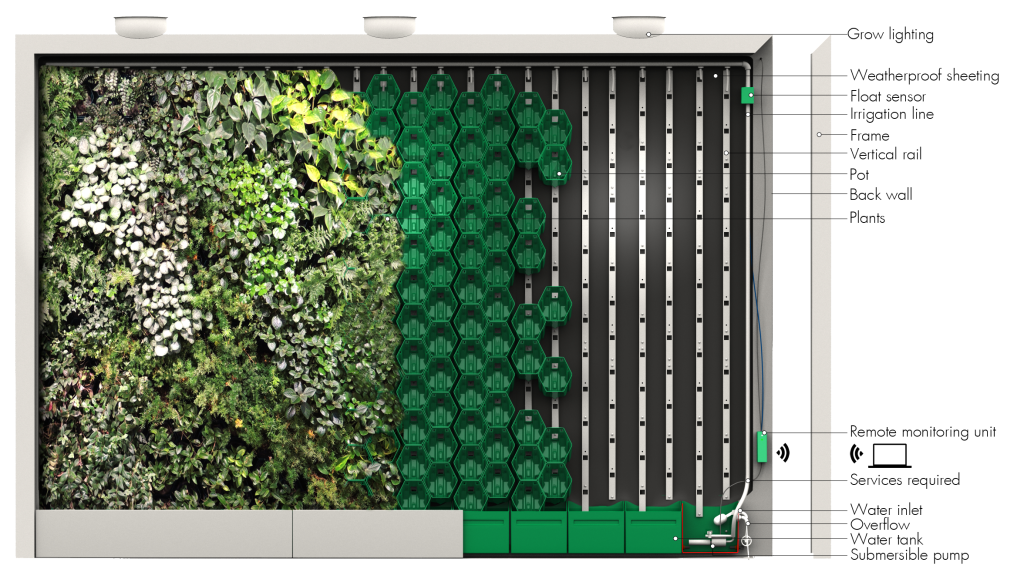
Vertical gardens, often constructed using a series of planters arranged vertically, provide a versatile and visually striking option. They allow for a wide range of plant species, offering a variety of textures and colors. Installation can be adapted to different wall structures and space limitations. A key advantage is the ability to customize the arrangement and design.
Wall Planters
Wall planters are pre-designed units, often made of materials like wood, metal, or plastic, and designed to be mounted directly onto a wall. They offer a more contained and structured environment for plants, requiring less installation effort and more pre-determined aesthetic. This type is typically simpler to maintain than more complex vertical garden setups.
Modular Systems
Modular systems offer the most flexibility. Composed of individual, interconnected units, these systems allow for customizable configurations. This modularity allows for easy adaptation to varying wall shapes and sizes. They often feature integrated irrigation and drainage systems, streamlining maintenance.
Comparison of Small Living Wall Types
| Type | Features | Size | Cost |
|---|---|---|---|
| Vertical Gardens | Versatile, customizable arrangement, wide range of plant options | Typically 1-5 square meters | Moderate to High, depending on materials and plant selection |
| Wall Planters | Pre-designed, contained environment, less installation effort | Usually 0.5-2 square meters | Lower to Moderate, depending on the material and size |
| Modular Systems | Highly customizable, integrated irrigation, flexible configuration | 0.5-10 square meters or more, depending on configuration | High, due to components and potential complexity |
Design and Installation Considerations
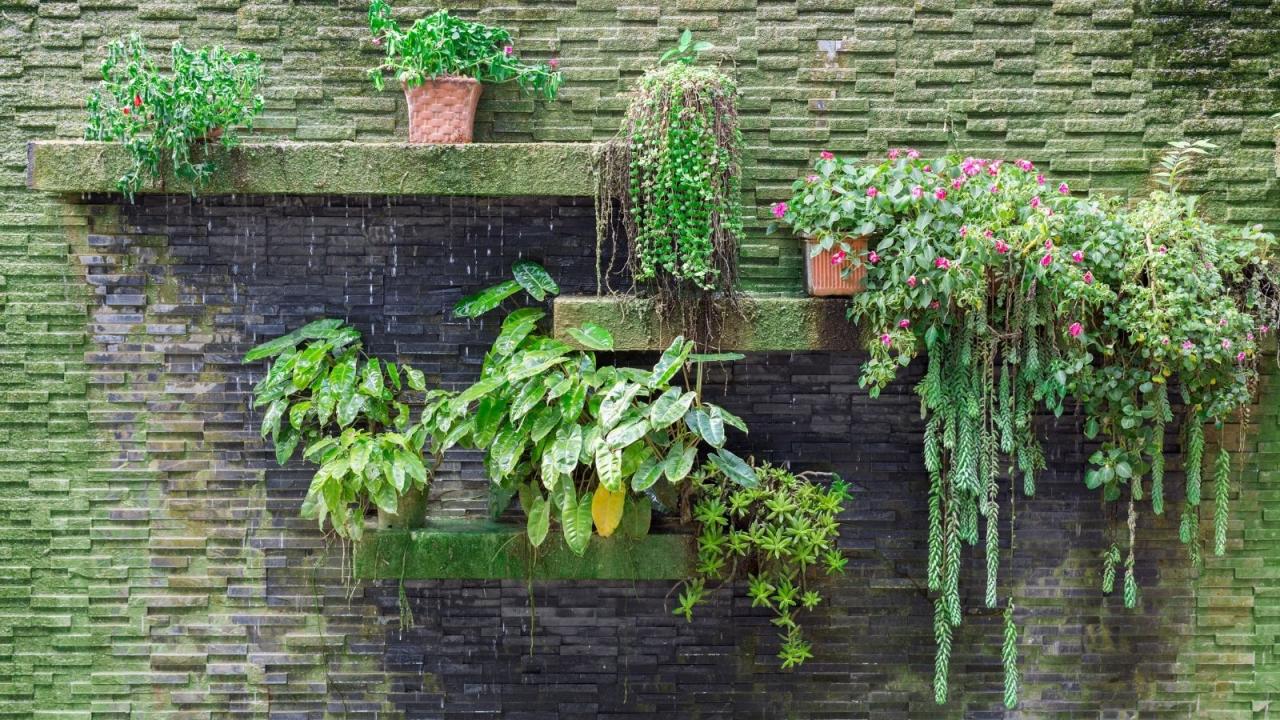
Source: vogueitude.com
Designing a small living wall requires careful consideration of the space and the plants’ needs. Proper planning ensures a thriving and aesthetically pleasing addition to your home or office. This section delves into crucial aspects, from selecting the right plants to choosing the most suitable mounting system.
Appropriate design and installation are paramount for the success of a small living wall. Ignoring critical factors like lighting, ventilation, and mounting options can lead to plant stress and, ultimately, failure. Thorough preparation minimizes the risk of complications and maximizes the enjoyment of your living wall.
Plant Selection for the Space
Choosing the right plants is essential for a successful living wall. Consider the specific light conditions and the amount of humidity and airflow in the space. Selecting plants that thrive in similar conditions ensures the wall’s long-term health. For example, succulents or air plants are excellent choices for low-light environments, while ferns might require higher humidity.
Lighting and Ventilation Requirements
Proper lighting and ventilation are crucial for plant health. Living walls require specific lighting depending on the chosen plants. Plants with high light requirements need ample natural light or specialized grow lights. Adequate ventilation is equally important to prevent fungal diseases and ensure proper air circulation around the plants. Monitor humidity levels and ensure airflow is adequate for optimal plant growth.
Mounting Options for Small Living Walls
Various mounting options are available for small living walls, each with its advantages and disadvantages. These include adhesive systems, metal brackets, and custom-built frames. Adhesive systems are suitable for smooth surfaces, while metal brackets offer more support and flexibility for irregular walls. Consider the wall’s material and the weight of the living wall when choosing the appropriate mounting system.
Tools and Materials for Installation
The tools and materials required for installation vary depending on the chosen mounting system. Essential tools include a measuring tape, a drill, a screwdriver, and safety glasses. Necessary materials include mounting hardware, adhesive, and, of course, the chosen plants. Ensuring that the tools and materials are compatible with the mounting system is critical for a successful installation.
Installation Process Diagram
// Simplified Diagram (Illustrative)
+-----------------+
| Wall |
+-----------------+
|
| Mounting Hardware
|
| (e.g., brackets, adhesive)
|
| Living Wall Panels
|
| Plants
|
|
+-----------------+
| Supporting Structure |
+-----------------+
// (e.g., frame, metal grid)
The diagram illustrates a typical installation process. The wall is prepared, mounting hardware is secured, living wall panels are attached, and plants are carefully positioned. A supporting structure (e.g., a frame or metal grid) may be necessary to maintain the wall’s stability.
Plant Selection for Small Living Walls
Selecting the right plants is crucial for the success of a small living wall. Choosing species appropriate for the environment, considering factors like light exposure and water needs, will ensure the wall thrives and remains visually appealing. A careful selection process will contribute to a healthy and aesthetically pleasing living wall.
Best Plant Types for Small Living Walls
Choosing the right plant species is essential for a thriving small living wall. Plants need to be well-suited to the specific environment, considering factors like light and water availability. Species with relatively low maintenance requirements are ideal for smaller living wall projects.
Low-Maintenance Plant Species
Several plant species excel in small living wall environments due to their adaptability and low maintenance needs. These plants often require less frequent watering and can tolerate a range of light conditions. Popular choices include various types of succulents, certain types of ferns, and some flowering vines.
Water Requirements of Different Plant Species
Understanding the water needs of different plant species is crucial for successful small living wall design. Some plants require consistent moisture, while others are drought-tolerant. Matching the plant’s water needs with the irrigation system of the living wall is important for the long-term health of the plants. For example, succulents require significantly less water than leafy greens.
Sunlight Considerations in Plant Selection
The amount of sunlight available significantly impacts plant selection for a small living wall. Plants thrive in environments with light levels that match their natural habitat. Identifying the specific light requirements of each plant species is essential to ensure they thrive. For instance, some plants prefer full sun, while others flourish in partial shade.
Plant Species Table
| Plant Species | Light | Water |
|---|---|---|
| ZZ Plant (Zamioculcas zamiifolia) | Low to Medium | Low |
| Snake Plant (Sansevieria trifasciata) | Low to Medium | Low |
| Pothos (Epipremnum aureum) | Low to Medium | Medium |
| Spider Plant (Chlorophytum comosum) | Medium | Medium |
| Succulent (various types) | Full Sun to Partial Shade | Low |
| Air Plant (Tillandsia spp.) | Medium to Bright | Low (primarily from humidity) |
Benefits and Applications
Small living walls, despite their compact size, offer a surprising array of benefits for diverse applications. From enhancing the aesthetics of a home or office to improving air quality and reducing noise pollution, these vertical gardens bring a wealth of advantages to any space. This section explores the advantages and applications of small living walls in various settings.
Advantages of Small Living Walls
Small living walls offer numerous advantages, including improved indoor air quality and a visually appealing presence. Their compact design makes them suitable for spaces of limited size, from a small balcony to a corner of an office.
- Enhanced Aesthetics: Small living walls dramatically improve the visual appeal of any space. The vibrant greenery adds a touch of natural beauty and serenity, instantly transforming the ambiance. This visual impact can boost morale and productivity, particularly in office environments.
- Improved Air Quality: Plants absorb carbon dioxide and release oxygen, contributing to better air quality. This is particularly beneficial in environments with limited outdoor access or in spaces with high occupancy, such as offices or classrooms.
- Noise Reduction: The presence of plants can absorb sound waves, leading to a quieter and more peaceful environment. This effect is more pronounced in areas with significant background noise, such as restaurants or busy hallways.
- Increased Humidity: Plants naturally increase humidity levels in the air. This can be particularly beneficial in dry climates or areas with central heating, helping to maintain a comfortable indoor environment.
- Reduced Stress and Improved Well-being: Studies suggest that exposure to nature, including plants, can have a positive impact on stress levels and overall well-being. Small living walls can create a calming and restorative atmosphere, fostering a more relaxed environment.
Aesthetic Benefits
The aesthetic benefits of small living walls are undeniable. They can add a touch of natural beauty to any interior space, creating a tranquil and inviting atmosphere. The vibrant colors and textures of various plant species offer a visual feast, while the fresh greenery brings a touch of the outdoors in.
Environmental Benefits
Beyond aesthetics, small living walls contribute to a more sustainable environment. Their ability to improve air quality and reduce noise pollution is are significant environmental advantage.
- Reduced Carbon Dioxide: Plants absorb carbon dioxide from the atmosphere, helping to mitigate the effects of greenhouse gas emissions. While the impact of a single small living wall is relatively small, the cumulative effect of numerous installations can be substantial.
- Improved Air Purification: Plants filter pollutants from the air, reducing the presence of airborne particles and improving the overall air quality. This can have a significant impact on indoor air quality, especially in spaces with high levels of air pollution.
- Water Conservation: Proper irrigation and plant selection can contribute to water conservation in a space. Carefully chosen species and well-maintained systems can minimize water waste.
Applications in Different Spaces
Small living walls can be incorporated into a variety of interior spaces, transforming them into more inviting and aesthetically pleasing environments.
- Residential Spaces: Small living walls are ideal for adding a touch of nature to homes. They can be placed in hallways, living rooms, or even bathrooms, creating a calming and inviting atmosphere.
- Commercial Spaces: In offices, restaurants, and retail stores, small living walls can boost employee morale, attract customers, and create a more aesthetically pleasing environment.
- Restaurants: A small living wall can add a touch of freshness to a dining space. This can create a more relaxed and inviting atmosphere, improving the overall dining experience.
- Retail Stores: Adding a living wall can elevate the store’s ambiance, making it more attractive and engaging to customers. The natural greenery can make the store stand out from the competition.
Impact on Air Quality and Noise Reduction
Small living walls can contribute significantly to improved air quality and reduced noise levels. The plants absorb pollutants and dampen sound waves, improving the overall environment.
Comparison in Residential and Commercial Settings
The application of small living walls differs slightly between residential and commercial spaces. Residential installations often prioritize aesthetic appeal and a calming atmosphere, while commercial installations focus on enhancing the environment for productivity and customer experience.
- Residential: In residential settings, the focus is often on personal preference, and the living wall is integrated into the space to enhance aesthetics and well-being.
- Commercial: In commercial spaces, the impact of a living wall extends to influencing customer experience and improving employee morale and productivity.
Cost and Budget Considerations
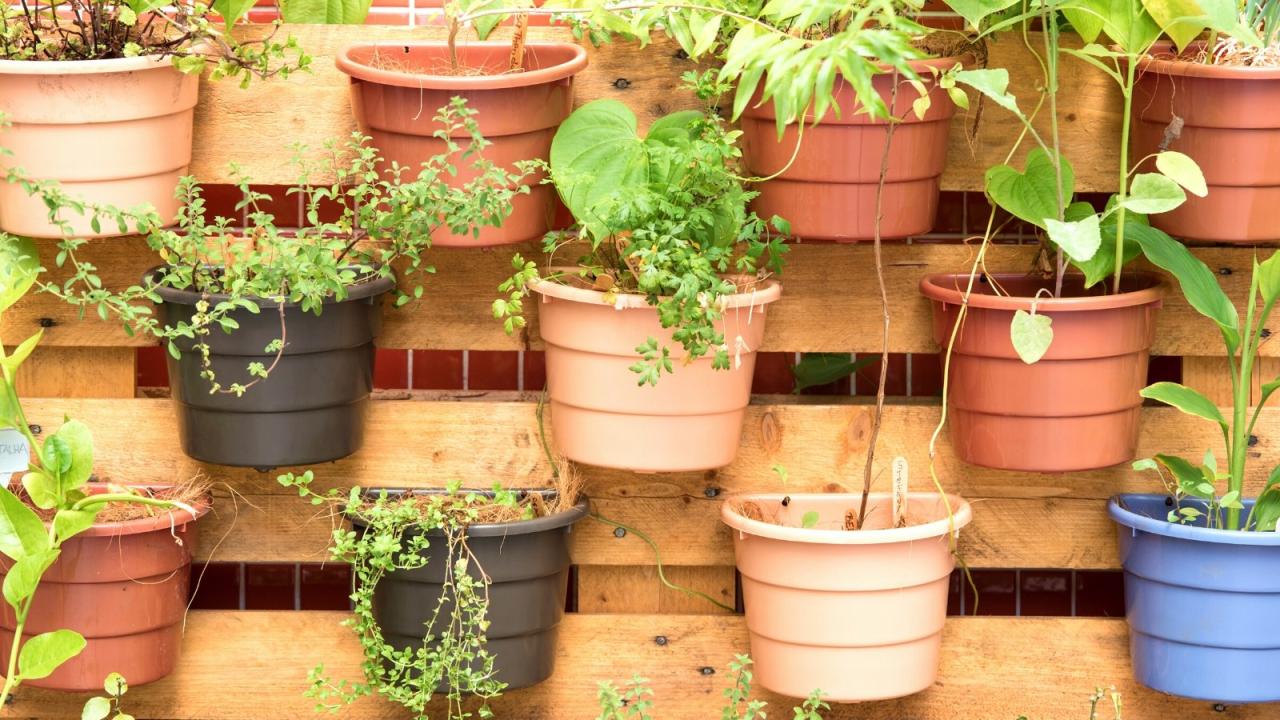
Source: epicgardening.com
Small living walls, while aesthetically pleasing and environmentally beneficial, require careful budgeting. Understanding the various cost components is crucial for realistic planning and successful implementation. This section details the factors influencing the total cost, from initial setup to ongoing maintenance.
A comprehensive understanding of the cost structure helps in creating a realistic budget, enabling informed decisions throughout the project lifecycle. From choosing the appropriate system to selecting the right plants, each decision has a financial impact that must be factored into the overall budget.
Estimated Cost Ranges for Different Small Living Wall Systems
Different small living wall systems vary significantly in price. Basic DIY systems, utilizing readily available materials and simple designs, can start at a few hundred dollars. More elaborate systems with sophisticated designs, advanced irrigation, and custom-made components can easily exceed several thousand dollars. Factors such as the size of the wall, the complexity of the design, and the chosen materials directly influence the final cost.
Factors Influencing the Total Cost of a Small Living Wall Project
Several factors contribute to the overall cost of a small living wall project. The size of the wall, the complexity of the design, and the type of plants chosen are primary considerations. Sophisticated irrigation systems and specialized planters increase costs. Additionally, professional installation fees can vary greatly depending on the complexity of the project and the experience of the installer. The chosen plants also play a significant role, with rarer or more exotic species driving up the cost.
Comparison of Installation Methods and Materials
Installation methods significantly impact the cost. DIY installations, while potentially saving money, may require more time and effort, potentially increasing the risk of mistakes. Professional installation ensures quality and accuracy, but it will add to the overall budget. The type of materials used also influences cost. For example, high-quality planters made of durable materials like concrete or metal are more expensive than simpler, less robust options.
Potential Long-Term Costs of Maintaining a Small Living Wall
While the initial investment is a key consideration, long-term maintenance costs are equally important. Watering requirements, fertilization needs, and potential pest or disease control all contribute to the ongoing expense. Regular monitoring and maintenance are essential for the health of the plants and the longevity of the living wall. Over time, this can become a substantial amount. A well-maintained living wall will need less intervention, leading to lower long-term costs.
Cost Breakdown for Different Small Living Wall Systems
| System | Installation | Plants | Total Cost |
|---|---|---|---|
| DIY System (Basic) | $100-$500 | $150-$400 | $250-$900 |
| DIY System (Advanced) | $500-$1500 | $300-$1000 | $800-$2500 |
| Pre-fabricated System (Small) | $1000-$3000 | $200-$800 | $1200-$3800 |
| Custom Designed System (Large) | $3000-$10000+ | $500-$5000+ | $3500-$15000+ |
Note: These are estimated ranges, and actual costs may vary based on specific project requirements.
Future Trends and Innovations
Small living walls are rapidly evolving, driven by advancements in materials, technology, and design. This evolution promises increased efficiency, enhanced aesthetics, and greater integration with modern living spaces. The integration of smart technology and renewable energy sources is poised to reshape the future of these vertical gardens, making them more sustainable and user-friendly.
Emerging trends in small living wall design and technology highlight a move towards greater sophistication and personalized experiences. This is complemented by a growing emphasis on environmental consciousness, reflected in the exploration of sustainable materials and energy solutions.
Emerging Design Trends
Small living walls are moving beyond simple aesthetic additions. Designers are increasingly exploring innovative configurations, incorporating curved surfaces, varied plant palettes, and interactive elements. The use of biophilic design principles, which emphasizes connecting with nature, is also gaining traction. These trends are aimed at creating immersive and personalized vertical gardens that enrich the indoor environment.
Innovative Materials and Techniques
New materials are enhancing the construction and maintenance of small living walls. Lightweight, durable, and aesthetically pleasing substrates are replacing traditional materials. Advanced hydroponic and aeroponic systems are improving water usage and nutrient delivery, enabling more efficient plant growth. The development of self-regulating systems for light and humidity is another significant advancement, reducing the need for constant human intervention.
Integration of Smart Technology
Smart technology is transforming small living walls from static displays into dynamic environments. Sensors can monitor factors like light levels, humidity, and nutrient levels, allowing for automated adjustments to optimize plant health. This data can be displayed on user-friendly interfaces, enabling homeowners to actively participate in the maintenance of their living walls. Moreover, smart technology allows for customized watering schedules and light adjustments, maximizing efficiency and plant health. Examples include systems that automatically adjust watering based on real-time soil moisture levels or lighting that mimics natural sunlight patterns.
Renewable Energy Integration
The use of renewable energy sources is a key component of sustainable small living wall design. Solar panels and other renewable energy sources can power the pumps, fans, and other equipment needed to maintain optimal conditions. This integration can reduce reliance on the electrical grid, lowering operational costs and minimizing the environmental impact. This trend mirrors the broader movement towards energy independence and sustainability in home design.
Innovative Features for Future Designs
- Automated Pest Control Systems: Integration of sensors and automated systems to detect and deter pests, ensuring the health of the plants and reducing the need for chemical interventions.
- Dynamic Lighting Systems: Advanced lighting systems capable of simulating changing daylight patterns, promoting plant growth, and providing a dynamic aesthetic experience. These systems can also be programmed to adapt to different plant needs.
- Interactive Displays: Incorporating interactive elements like touchscreens or projection mapping, allowing users to learn about the plants, their care requirements, and environmental information. This can be especially useful in educational settings.
- Vertical Farming Integration: Combining small living walls with vertical farming systems, enabling the production of fresh herbs, vegetables, or other edible plants, further enhancing sustainability and creating a closed-loop system.
Conclusion
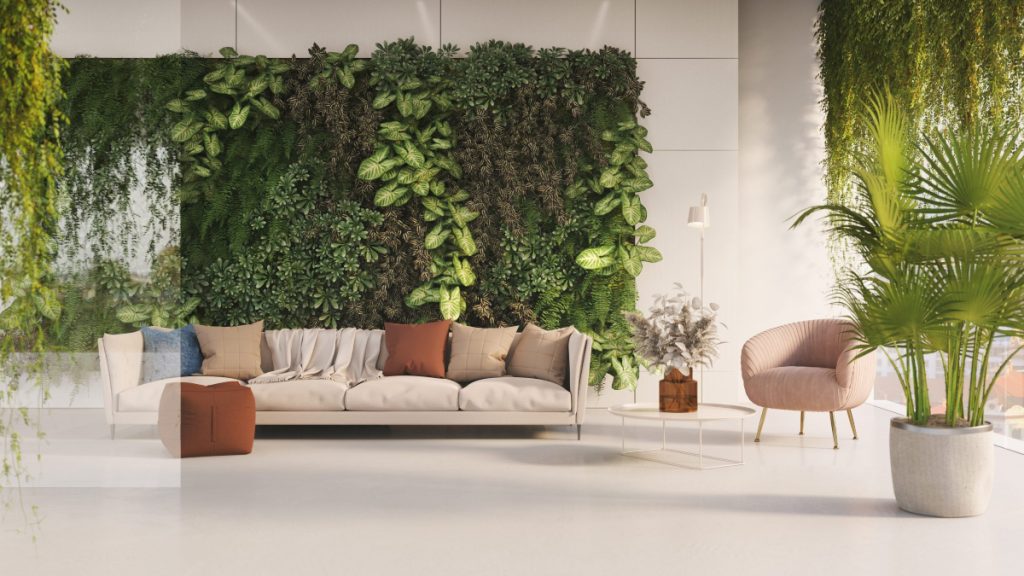
In conclusion, small living walls provide a unique blend of aesthetics, sustainability, and practicality. They are an attractive way to bring nature indoors and improve the environment in a variety of spaces. From initial design to long-term maintenance, this comprehensive guide has explored the crucial factors involved. Understanding the diverse types, installation considerations, plant selection, and maintenance needs is essential to successfully incorporate a small living wall into your environment. Ultimately, the benefits, including improved air quality, reduced noise, and enhanced aesthetics, make small living walls a compelling option for any space seeking a touch of greenery and a boost to its overall appeal.
